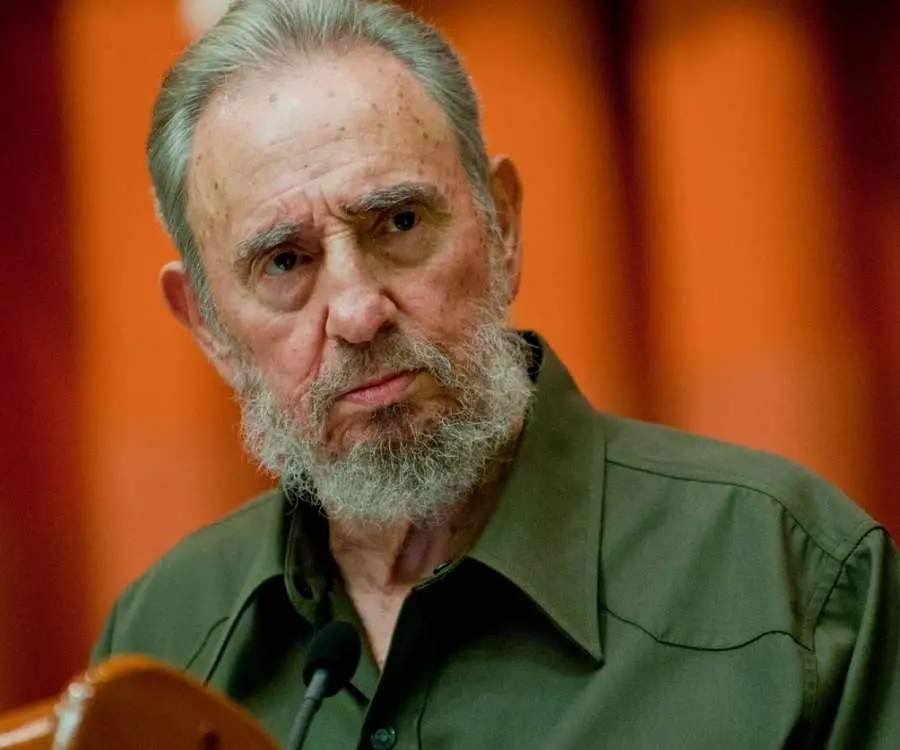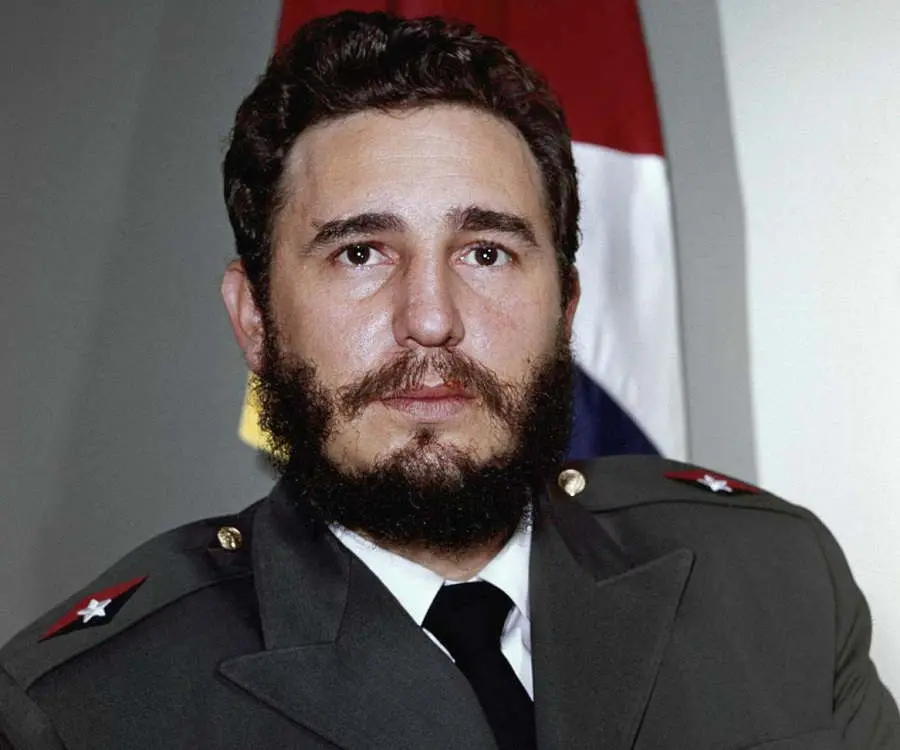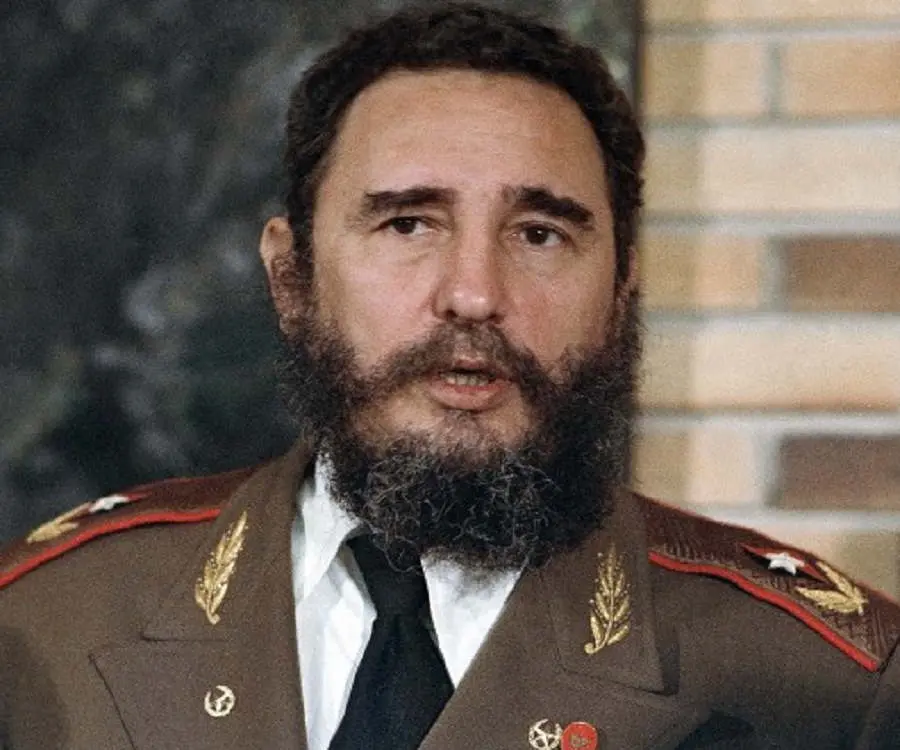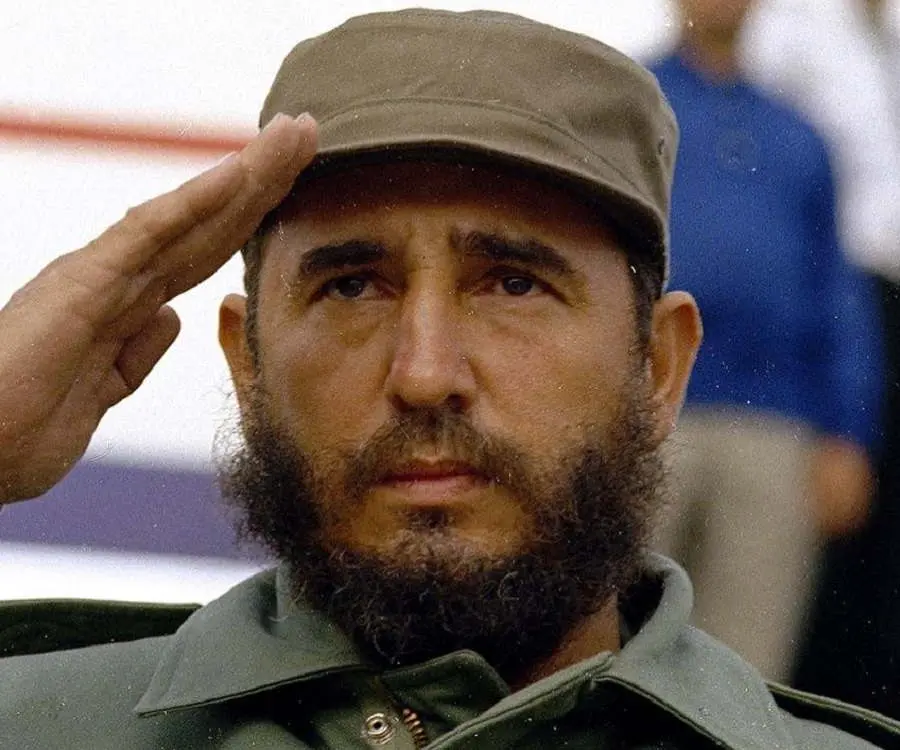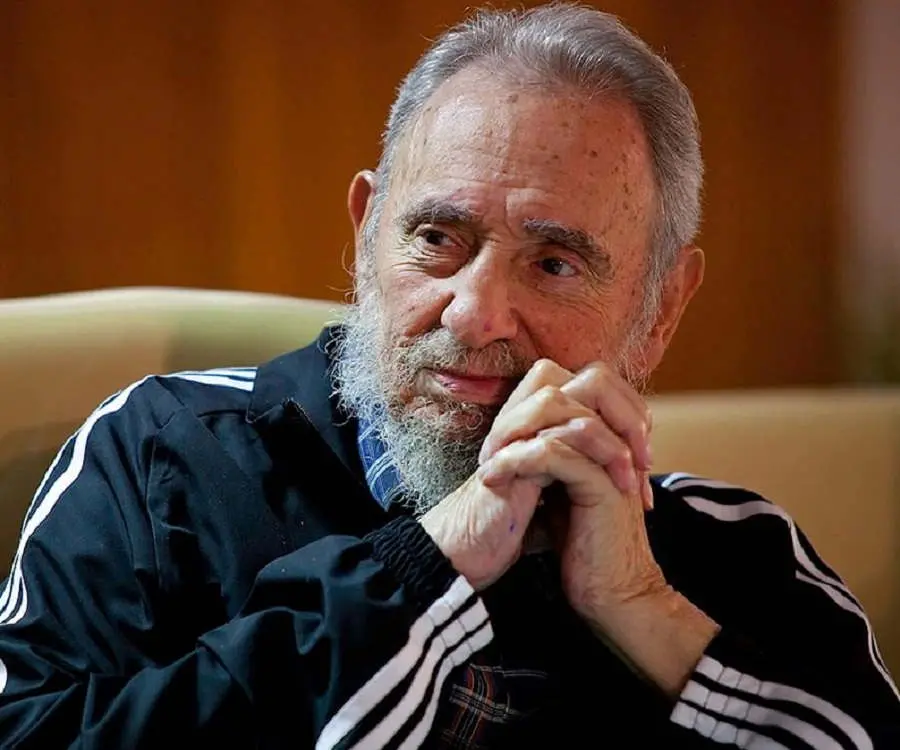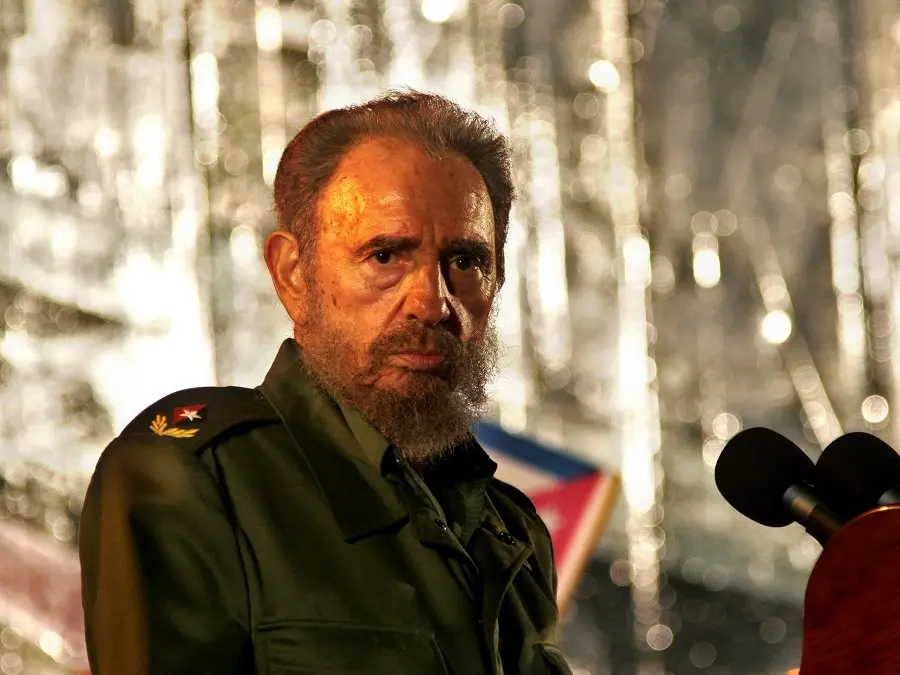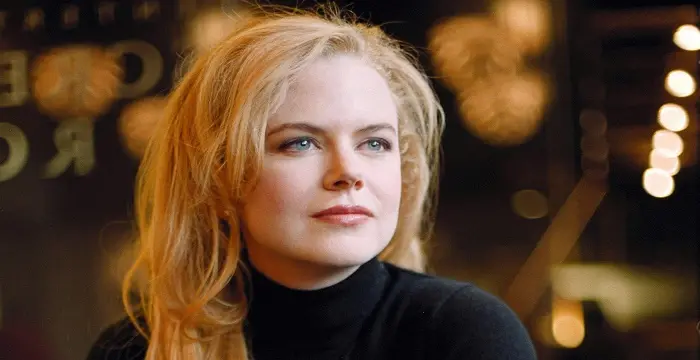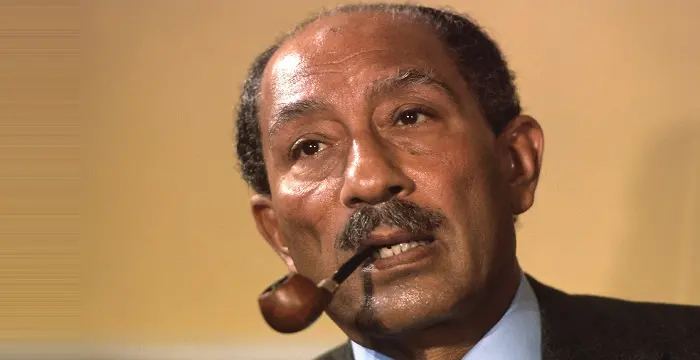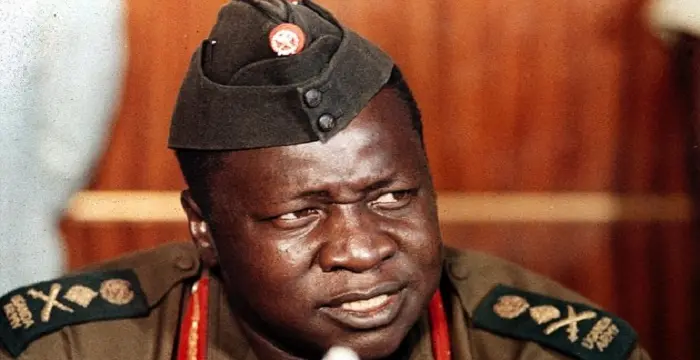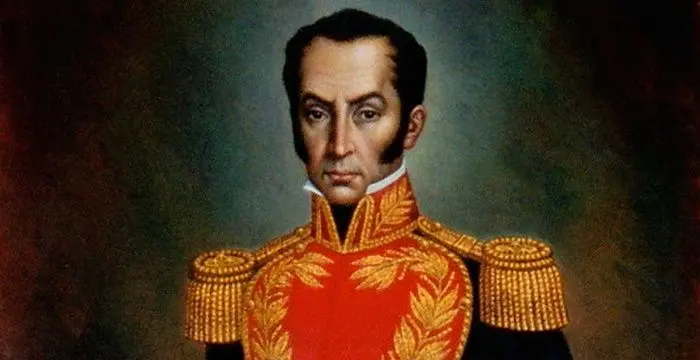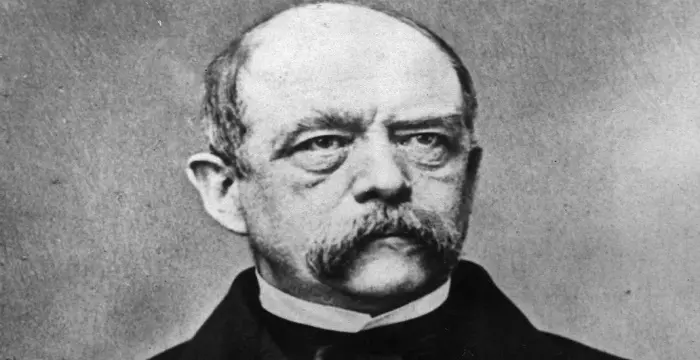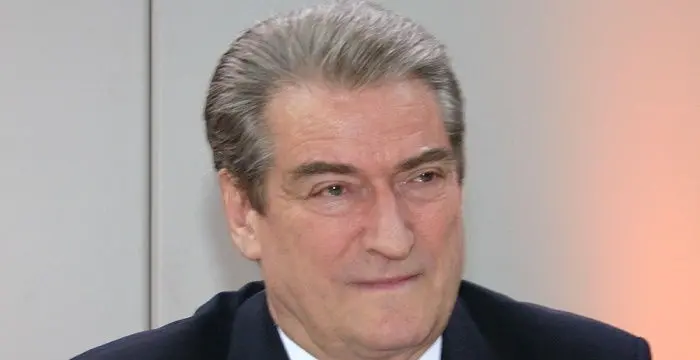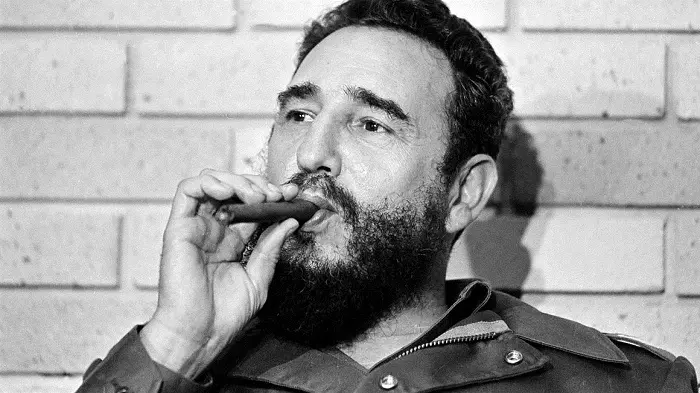
Fidel Castro - Cuban Revolutionary Leader, Life Achievements and Childhood
Fidel Castro's Personal Details
Fidel Castro was a Cuban revolutionary leader who served as the Prime Minister and President of Cuba
| Information | Detail |
|---|---|
| Birthday | August 13, 1926 |
| Died on | November 26, 2016 |
| Nationality | Cuban |
| Famous | Humanitarian, Communists, Leaders, Political Leaders, Presidents, Cuban Revolutionary Leader |
| Ideologies | Communists |
| Spouses | Dalia Soto del Valle |
| Siblings | Raúl Castro |
| Childrens | Alex Castro-Soto, Alexis Castro-Soto, Alina Fernández, Angel Castro-Soto, Antonio Castro-Soto, Fidel Ángel Castro Díaz-Balart Alejandro Castro-Soto, Francisca Pupo, Jorge Angel Castro |
| Universities |
|
| Birth Place | Birán, Cuba |
| Political Ideology | Communist Party of Cuba |
| Gender | Male |
| Father | Ángel Castro y Argiz |
| Mother | Ángela María Castro Ruz |
| Sun Sign | Leo |
| Born in | Birán, Cuba |
| Famous as | Cuban Revolutionary Leader |
| Died at Age | 90 |
Fidel Castro's photo
Who is Fidel Castro?
Fidel Castro was one of the most prominent communist leaders of the last century. He was the Prime Minister, President and Commander-in-Chief of Cuba and made the country a one-party socialist state. Castro started off as a rebellion against right-wing governments in the Dominican Republic and Colombia and in a matter of time became the leader of the communist revolution and ruled Cuba for almost 6 decades. In his almost six-decade long career, Castro moved from the rank of being a ‘political illiterate’ to being a ‘pro politician’. Adopting anti-imperialistic politics, Castro led the Cuban Revolution and successfully overthrew Fulgencio Batista, the US-backed President of Cuba. He developed strong ties with the Soviet Union, which further irked the U. S. A, which US attempted to remove him, by economic blockade, assassination and counter-revolution but none of these had an impact on Castro and his rule remained strong. Castro implemented various socialistic reforms including introduction of the central economic planning and expansion of the healthcare and education. Castro also served as the Secretary General of the Non Aligned Movement and the First Secretary of the Communist Party of Cuba.
// Famous Humanitarian
Joyce Meyer
Joyce Meyer is a Christian author and speaker. This biography provides detailed information about her childhood, life, achievements, works & timeline
Swami Vivekananda
Swami Vivekananda was the chief disciple of Sri Ramakrishna, and was responsible for awakening India spiritually. Check this biography to know in detail about his life, profile and timeline.
Nicole Kidman
Nicole Kidman is one of the most talented actors that the Hollywood film industry can boast of. Browse through this biography to get detailed information regarding her life, childhood, profile & timeline
Childhood & Early Life
Born to Angel Castro y Agrgiz and Lina Ruz Gonzalez, Fidel Castro was the illegitimate child of the couple and hence bore the surname Ruz for the first 17 years of his life. He was the third of the seven children of the couple.
At the age of six, young Castro was sent to live with his teacher in Santiago de Cuba. As a child, he attended various schools, finally enrolling himself at the El Colegio de Belen in Havana.
Academically, Castro was just an average student but he had a profound liking for sports and excelled in the same. He played for the school’s baseball team.
Political Pursuits
In 1945, Castro enrolled himself at the law school in the University of Havana. Although he was politically illiterate at the time of admission, he soon found himself immersed in the political climate of Cuban nationalism, anti-imperialism and socialism.
He joined the University Committee, which opposed the intervention of the US in the Caribbean and fought for the Independence of Puerto Rico. Falling back upon honesty, decency and justice, Castro opposed corruption and openly associated it with US interference.
With time, Castro gained prominence so much so that his speech on the corruption and violence of Grau’s regime earned him a place on the front page of every newspaper.
In 1947, Castro joined the Party of the Cuban People, a socialist group headed by presidential candidate Chibas. An anti-communist political party, it aimed at securing an honest government and political freedom. It also paid significant importance to social reforms and economic independence.
Additionally, Castro acquired the post of the president of the University Committee for Democracy in the Dominican Republic. The committee decided to invade the Dominican Republic and overthrow its right-wing president, Rafael Trujillo, who was an ally of the US.
Led by Dominican exile General Juan Rodriguez, about 1200 men joined the rebellion and launched the invasion from Cuba. However, they were squashed in a matter of time by the US and Dominican forces. Castro luckily escaped the mass arrest.
Though the mission turned out to be a failure, it did, however, strengthen Castro’s opposition to the Grau administration. Following this, Castro travelled to Venezuela and Panama, before visiting Bogota, Colombia. Insurgence and rebelliousness ruled the city as there was a riot between the governing Conservatives and the leftist liberals. Castro supported the liberals.
With time, Castro rose to prominence among the public and openly protested against the government wrongdoings. It was during the end of the 1940s that Castro was exposed to the Marxism and was greatly influenced by the same.
Castro realized that corrupt politicians were not the only problem of Cuba, it was the dictatorship of the bourgeoisie that was the problem. A visit to the poorest villages of Havana and the exposure to the social and racial inequalities prevalent there further solidified Castro’s belief who became active in the University Committee for the Struggle against Racial Discrimination
Graduating in 1950 as a Doctor of Law, Castro began his legal practice. He started a legal partnership with Jorge Azpiazu and Rafael Resende, focusing on helping poor Cubans assert their rights but poor finances let to the closure of the firm.
Castro turned his interest to politics and became an active member of the Cuban Peace Committee. Still focussing his vision for Cuba around Chibas and the Party of the Cuban People, Castro envisioned himself as the heir to Chibas, following the latter’s death. Castro’s radical reputation, however, came in his way as the nominated candidate.
General Fulgencio Batista’s return to power scrapped the slated presidential elections as he set himself up as a dictator. He got support from the military and Cuban elite and the US recognized his government.
Baffled by this, Castro made plans to oust the government. Along with 150 supporters, he attacked the Moncada military barracks with an attempt to overthrow Batista. However, the 26 July plan failed and Castro was tried and imprisoned. Nevertheless, the incident raised the popularity of Castro amongst the Cubans.
While in jail, Castro kept the rebellious sentiments alive and maintained control of the Movement. Meanwhile, Batista held the presidential election in 1954 but won the same as there were no opponents.
Released two years later on May 15, 1955, Castro moved to Mexico, where along with Ernesto "Che" Guevara, he formulated a plan to overthrow the Batista government. In no time, Guevara became an ally and confidante of Castro. They devised a new strategy which was called guerrilla warfare.
The Following year, forces led by Castro attacked the government forces but like earlier, failed in their attempt. Castro, along with Guevara and Raul (his brother) fled to the south-eastern coast.
Subsequently, Castro organized a parallel government alongside that of Batista’s and started building resistance groups in cities and small towns across Cuba. He enforced some agrarian reforms and controlled provinces with agricultural and manufacturing production.
In 1958, Castro, along with his group, launched military campaigns throughout the key areas of Cuba, which resulted into the collapse of the government and Batista fled to Dominican Republic.
Castro emerged as a national hero. While Jose Miro Cardona was voted as the Prime Minister for Cuba, Castro became the commander-in-chief of the military. However, as a result of Miro’s sudden resignation, Castro became the Prime Minister of Cuba on February 16, 1959.
Prime-Ministerial Years
Castro accepted the position of the Prime Minister of Cuba with a condition that the powers of the Prime Minister should be increased.
In his initial days as the Prime Minister, Castro launched various reforms which resulted in nationalization of factories and plantations. This move was mainly focussed to end the US economic domination. However, the reforms antagonised the US towards Cuba.
Castro’s political tactics made him a favourite with lower classes, including workers, peasants, labors and so on, but he received opposition from the middle class comprising of doctors, engineers and professionals, which ultimately resulted into their mass-migration to the US, causing economic brain drain in Cuba.
Though he denied being a Communist and argued of having Marxist-type governance, much of his policies reflect the Soviet-style control of economy and the communist influence on the governance.
He was widely criticized for his reformative policies which led to the formation of anti-Castro groups. The group opposed the government, which was duly suppressed by Castro. Even journalists and writers who wrote against the government were forced to publish clarification at the end to every article that opposed the government, thus leading to press censorship.
Castro worked towards strengthening the ties between Cuba and the Soviet Union and it agreed to organize Cuba’s defence committee.
Furthermore, Cuba agreed to buy oil from Soviet, which led to expropriation of the U.S.-owned refineries in Cuba, when the latter refused to process the oil. Striking back, US cut short Cuba’s import of sugar.
US-Cuba ties worsened with the passage of time and came to all-time low in 1961. Outgoing US President Dwight Eisenhower broke off all diplomatic relations with the Cuban government and Castro declared Cuba a socialist state
In April 1961, thousands of exiles invaded Cuba at the Bay of Pigs in an attempt to overthrow the Castro regime. Despite being taken aback by this surprise attack, the military was able to restrict the insurgents. The toll of the number of dead went past hundreds.
Capitalizing on this US-backed incident, Castro further strengthened his position by announcing the end of democratic elections and American imperialism. Thereafter, he clearly indicated to the world that he was a Marxist-Leninist and Cuba would follow the communist way.
While US imposed economic ban on Cuba, the Soviet Union affirmed its base by giving Cuba economic and military aid. The increasing hold of Soviet Union over Cuba reached a new level when Soviet Premier Nikita Khrushchev conceived the idea of placing nuclear missiles in Cuba to avert US invasion.
Discovering the plan, US asked Khrushchev to remove the missiles, which he agreed in exchange for the United States' public agreement not to invade Cuba and US removal of Jupiter missiles from Turkey.
In 1965, Castro formed the Cuba Communist party. Serving as the head of the organization, he initiated a campaign which supported armed struggle against imperialism in Latin America and Africa.
Slowly, he became the leading spokesperson of the Third World countries. Cuba became a member of the OAM (Organization of American States), with Cuba’s government being called first National Congress of the Cuban Communist Party.
Cuba’s emergence as a socialist state meant abolishing the position of the President and the Prime Minister and adoption of a new constitution based on the lines of the Soviet Union.
Castro was proffered with the position of the Presidency of both Council of State and Council of Ministers, which made him the head of state and head of government
Castro's Presidency & Retirement
Along with Cuban Presidency, Castro also remained the President of the Non-Aligned Movement until 1982. Under his rule, the literacy rate of Cuba increased to 98% as hundreds and thousands of new schools were opened. The infant mortality rate of the country also reduced dramatically to 1.1% under the Castro regime.
Civil liberties, however, crumpled under his administration, as labor unions lost the right to strike. Independent newspapers were forced to shut down as were religious institutions.
Anyone who stood at the opposite end of Castro was removed either through imprisonment or execution and sometimes forced emigration, which was prevalent in the 1980s when Castro opened the port of Mariel to allow Cubans who wished to move to the U. S.
Though US initially agreed for a total of 3500 refugees, mass exodus took place resulting in almost 120, 000 Cubans seeking shelter in the US. Castro, astute as he was, filled the boats carrying the people with convicts, mental patients and socially undesirables.
The economy of Cuba hit all-time low in 1999 as favourable trade from the Soviet Union crashed. In two years, the economy dipped over 40% with major food shortages, widespread malnutrition and lack of basic goods.
Realizing the need for reforms, Castro announced a number of changes at the Fourth Congress of the Cuban Communist Party meeting, primary of which was his stepping down as the head of the government. He, however, retained his position as the head of the Communist Party and Commander-in-Chief of the armed forces.
A number of economic reforms were brought to the forefront and emigration restrictions were relaxed. Apart from sugar industry, biotechnology and tourism were also selected to provide a boost to the economy.
Castro even softened his arch-anti-religious sentiments, allowing people belonging to religious faith to join the Communist Party. He allowed people to choose their own religious faith and even organized a visit by Pope John Paul II to Cuba in 1998, a move that not only strengthened the position of Church but also Castro’s government in Cuba.
The dawn of the 21st century brought to Cuba a ‘godsend’ opportunity in the form of Hugo Chavez, the President of Venezuela. Castro and Chavez developed economic ties, which solidified Cuba’s economy.
On July 31, 2006, Castro transferred all his powers to Raul, his brother, on account of his failing health. However, with time, his health recovered and he took part in the important issues of the government.
Two years later, Castro gave up his position as the head of the Communist party and the Commander-in-chief of the military as well. Though Raul substituted him, he gave a provision that allowed him to seek advice and consultation from Castro in matters of great importance. His retirement was announced on February 24, 2008.
Post-retirement, Castro took to writing a column - Reflections of Fidel, which reflected an account of his personal experiences and opinions.
Awards & Achievements
He became the first foreigner to receive the Order of Lenin - he was honoured with this three times.
His effort against racism won him South Africa’s highest civilian award for foreigners - the Order of Good Hope.
Additionally, he was honoured and praised by many governments around the world, including Czechoslovakia, Bulgaria, Vietnam, Spain, Mexico, Ukraine, Venezuela, Malaysia etc.
Personal Life & Legacy
Castro went into the wedlock with Mirta Diaz Balart in 1948. Though both the families opposed the marriage, the two went with it.
It was through his relationship with Balart, who came from a wealthy Cuban family, that Castro was exposed to the lifestyle of the Cuban elite.
The couple was blessed with a son, Fidelito in 1949. The unison, however, did not last long as Castro broke ties with Balart (1955) on account of her working for Batista.
Following his divorce with Balart, Castro had sexual affairs with two female supporters - Naty Revuelta and Maria Laborde, each of whom conceived him a child.
Since 1990s, Castro suffered from various health issues, which worsened in 2006 when he was reported to be suffering from gastrointestinal bleeding
He died on 26 November 2016, at the age of 90.
Trivia
He served as the Prime Minister of Cuba from 1959 to 1976, and President from 1976 to 2008. Additionally, he was the Commander-in-Chief from 1959 to 2008.
‘History Will Absolve Me’ is the concluding line of the speech and subsequent title of the publication, said and written by this Cuban revolutionary.
// Famous Political Leaders
Edi Rama
Edi Rama is the current Prime Minister of Albania. Check out this biography to know about his childhood, life, achievements, works & timeline.
Khalifa bin Zayed Al Nahyan
Sheikh Khalifa bin Zayed Al Nahyan is the current President of the United Arab Emirates (UAE). Check out this biography to know about his birthday, childhood, family life, achievements and fun facts about him.
Leo Varadkar
Cam Leo Varadkar is the current Taoiseach—the Prime Minister—of the Republic of Ireland. Check out this biography to know about his childhood, family life, achievements and other facts about his life.
Fidel Castro's awards
| Year | Name | Award |
|---|---|---|
Other | ||
| 1986 | Order of Lenin | |
| 1961 | Lenin Peace Prize | |
| 1975 | Jubilee Medal | |
| 0 | 1963 - Hero of the Soviet Union | |
| 0 | 1963 - Order of Lenin | |
| 0 | 1972 - Order of Lenin | |
Fidel Castro biography timelines
- // 13th Aug 1926Born to Angel Castro y Agrgiz and Lina Ruz Gonzalez, Fidel Castro was the illegitimate child of the couple and hence bore the surname Ruz for the first 17 years of his life. He was the third of the seven children of the couple.
- // 1940 To 1950With time, Castro rose to prominence among the public and openly protested against the government wrongdoings. It was during the end of the 1940s that Castro was exposed to the Marxism and was greatly influenced by the same.
- // 1945In 1945, Castro enrolled himself at the law school in the University of Havana. Although he was politically illiterate at the time of admission, he soon found himself immersed in the political climate of Cuban nationalism, anti-imperialism and socialism.
- // 1947In 1947, Castro joined the Party of the Cuban People, a socialist group headed by presidential candidate Chibas. An anti-communist political party, it aimed at securing an honest government and political freedom. It also paid significant importance to social reforms and economic independence.
- // 1948Castro went into the wedlock with Mirta Diaz Balart in 1948. Though both the families opposed the marriage, the two went with it.
- // 1950Graduating in 1950 as a Doctor of Law, Castro began his legal practice. He started a legal partnership with Jorge Azpiazu and Rafael Resende, focusing on helping poor Cubans assert their rights but poor finances let to the closure of the firm.
- // 26th Jul 1953Baffled by this, Castro made plans to oust the government. Along with 150 supporters, he attacked the Moncada military barracks with an attempt to overthrow Batista. However, the 26 July plan failed and Castro was tried and imprisoned. Nevertheless, the incident raised the popularity of Castro amongst the Cubans.
- // 1954While in jail, Castro kept the rebellious sentiments alive and maintained control of the Movement. Meanwhile, Batista held the presidential election in 1954 but won the same as there were no opponents.
- // 1955The couple was blessed with a son, Fidelito in 1949. The unison, however, did not last long as Castro broke ties with Balart (1955) on account of her working for Batista.
- // 15th May 1955Released two years later on May 15, 1955, Castro moved to Mexico, where along with Ernesto "Che" Guevara, he formulated a plan to overthrow the Batista government. In no time, Guevara became an ally and confidante of Castro. They devised a new strategy which was called guerrilla warfare.
- // 1958In 1958, Castro, along with his group, launched military campaigns throughout the key areas of Cuba, which resulted into the collapse of the government and Batista fled to Dominican Republic.
- // 16th Feb 1959Castro emerged as a national hero. While Jose Miro Cardona was voted as the Prime Minister for Cuba, Castro became the commander-in-chief of the military. However, as a result of Miro’s sudden resignation, Castro became the Prime Minister of Cuba on February 16, 1959.
- // 1961US-Cuba ties worsened with the passage of time and came to all-time low in 1961. Outgoing US President Dwight Eisenhower broke off all diplomatic relations with the Cuban government and Castro declared Cuba a socialist state
- // Apr 1961In April 1961, thousands of exiles invaded Cuba at the Bay of Pigs in an attempt to overthrow the Castro regime. Despite being taken aback by this surprise attack, the military was able to restrict the insurgents. The toll of the number of dead went past hundreds.
- // 1965In 1965, Castro formed the Cuba Communist party. Serving as the head of the organization, he initiated a campaign which supported armed struggle against imperialism in Latin America and Africa.
- // 1998Castro even softened his arch-anti-religious sentiments, allowing people belonging to religious faith to join the Communist Party. He allowed people to choose their own religious faith and even organized a visit by Pope John Paul II to Cuba in 1998, a move that not only strengthened the position of Church but also Castro’s government in Cuba.
- // 1999The economy of Cuba hit all-time low in 1999 as favourable trade from the Soviet Union crashed. In two years, the economy dipped over 40% with major food shortages, widespread malnutrition and lack of basic goods.
- // 2006Since 1990s, Castro suffered from various health issues, which worsened in 2006 when he was reported to be suffering from gastrointestinal bleeding
- // 31st Jul 2006On July 31, 2006, Castro transferred all his powers to Raul, his brother, on account of his failing health. However, with time, his health recovered and he took part in the important issues of the government.
- // 24th Feb 2008Two years later, Castro gave up his position as the head of the Communist party and the Commander-in-chief of the military as well. Though Raul substituted him, he gave a provision that allowed him to seek advice and consultation from Castro in matters of great importance. His retirement was announced on February 24, 2008.
- // 26th Nov 2016He died on 26 November 2016, at the age of 90.
// Famous Presidents
Khalifa bin Zayed Al Nahyan
Sheikh Khalifa bin Zayed Al Nahyan is the current President of the United Arab Emirates (UAE). Check out this biography to know about his birthday, childhood, family life, achievements and fun facts about him.
Anwar Sadat
Anwar Sadat was the third President of Egypt and has been awarded the Nobel Prize for his peace initiatives. To know more about his childhood, career, profile and timeline read on the following biography.
Idi Amin
A Ugandan dictator, Idi Amin is remembered for his brutal regime and crime against humanity. Check this biography to know in details about his life, childhood, profile and timeline.
Simon Bolivar
Simón Bolívar was a Venezuelan military leader who was instrumental in independence of several Latin American countries from the Spanish rule. This biography profiles his childhood, life, achievements and timeline.
Otto von Bismarck
Otto von Bismarck served as the Chancellor of Germany and the Prime Minister of Prussia. He unified the German states into a powerful German empire. This biography profiles his childhood, political career, life, achievements and timeline.
Sali Berisha
Sali Berisha is an Albanian politician who served as the President and the Prime Minister of Albania. Check out this biography to know about his childhood, life, achievements, works & timeline.
Fidel Castro's FAQ
What is Fidel Castro birthday?
Fidel Castro was born at 1926-08-13
When was Fidel Castro died?
Fidel Castro was died at 2016-11-26
Which age was Fidel Castro died?
Fidel Castro was died at age 90
Where is Fidel Castro's birth place?
Fidel Castro was born in Birán, Cuba
What is Fidel Castro nationalities?
Fidel Castro's nationalities is Cuban
What is Fidel Castro ideologies?
Fidel Castro's ideologies is Communists
Who is Fidel Castro spouses?
Fidel Castro's spouses is Dalia Soto del Valle
Who is Fidel Castro siblings?
Fidel Castro's siblings is Raúl Castro
Who is Fidel Castro childrens?
Fidel Castro's childrens is Alex Castro-Soto, Alexis Castro-Soto, Alina Fernández, Angel Castro-Soto, Antonio Castro-Soto, Fidel Ángel Castro Díaz-Balart Alejandro Castro-Soto, Francisca Pupo, Jorge Angel Castro
What was Fidel Castro universities?
Fidel Castro studied at University of Havana, Belen Jesuit Preparatory School
What is Fidel Castro's political ideology?
Fidel Castro's political ideology is Communist Party of Cuba
Who is Fidel Castro's father?
Fidel Castro's father is Ángel Castro y Argiz
Who is Fidel Castro's mother?
Fidel Castro's mother is Ángela María Castro Ruz
What is Fidel Castro's sun sign?
Fidel Castro is Leo
How famous is Fidel Castro?
Fidel Castro is famouse as Cuban Revolutionary Leader
